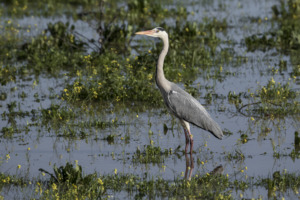
On the occasion of World Migratory Bird Day, this Saturday 13 May 2023, scientists from all over the world, including those from the Tour du Valat, are mobilising to draw attention to the problems currently facing the Doñana region in Andalusia-Spain. This vast wetland area of international importance, a Ramsar site, a National Park, a Biosphere Reserve, and a UNESCO World Heritage Site, plays a crucial role in welcoming large numbers of migratory birds from the European and Mediterranean region. It has a unique value in terms of biodiversity and is a major transit and wintering area for waterbirds. In a context of increasing drought, it is essential to allocate water in a way that meets the vital needs of the local population, the various economic sectors including agriculture, but also the natural environments and their rich biodiversity, in order to reconcile human activities and natural heritage. Through this open letter, the scientists bring to light a number of studies on Doñana and ask UNESCO to include this site on the list of “Natural Heritage in Danger”.
OPEN LETTER OF INTERNATIONAL BIRD MIGRATION SCIENTISTS:
MAINTAINING DOÑANA’S NATURAL WORLD HERITAGE VALUES WILL REQUIRE RADICAL CROSS-SECTORAL CHANGES IN WATER USE IN THE GUADALQUIVIR BASIN
The Greater Doñana ecosystem in the Guadalquivir basin in south Spain was long considered a crown jewel in the European network of protected areas. The Doñana National Park (established 1969) and its surrounding Biosphere Reserve (1980) are uniquely valuable in terms of local biodiversity, as well as being a major transit and wintering location for Europe’s waterbirds. The extraordinary natural values earned the National Park the status of UNESCO World Heritage site in 1994. Three decades later, however, Doñana is rapidly losing its characteristic ecosystems and unique biodiversity, and also the global role of the Guadalquivir basin in sustaining migratory bird populations is under threat1-3. Maintaining these natural values, and creating a safe operating space for Doñana, will require ambitious cross-sectoral actions in the Guadalquivir basin3.
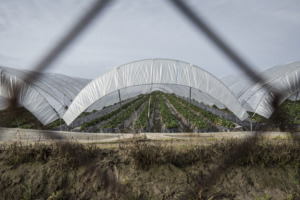
Although many factors contribute to the rapid deterioration of the Doñana World Heritage site4, a major contributor is the overexploitation of groundwater5-7 for intensive agriculture and mass tourism in the immediate surroundings of the protected area, which also cause severe contamination of water sources3,8. The negative consequences of water exploitation and pollution are now aggravated by drought conditions. And while the Mediterranean climate has always seen episodes of drought, severe and persistent drought conditions seem to increase in frequency as
predicted by climate change models3.
Over the past 30 years, groundwater overexploitation has resulted in reduction of groundwater levels of up to 20m, resulting in the loss of 60% of Doñana’s lagoons5-6. This culminated in the desiccation of even the largest permanent lagoons in 2022, causing major damage to Doñana’s unique freshwater flora and fauna. The groundwater extraction is also linked to intensive fertilizer use which is causing eutrophication of remaining groundwater, and of Doñana’s streams and marshes8. In addition, most of Doñana’s marshland has remained dry since 2021 due to persistent drought and a lack of incoming surface water through rivers and streams. Long-term census data shows that important breeding populations of a multitude of threatened species of waterbirds have (almost) completely disappeared from Doñana9. Moreover, the drying of the marsh also caused migrant birds to become almost entirely dependent on artificial wetlands outside the National Park, such as rice paddies and fish farms.
While numerous reports have sounded the alarm about the deteriorating natural values1-2 and the need to create a safe operating space3 for Doñana NP, we – international bird migration researchers – are very concerned about two acute situations in the Guadalquivir basin:
- A new Law Proposal that seeks to amplify the surface of land irrigated for the farming of red berries in the forest crown to the north of Doñana NP; a plan that has been widely condemned by numerous experts in Spain and internationally, as it would only add insult to injury, by aggravating the (legal) demand for increasingly scarce water.
- The ongoing drought is causing a massive reduction in the cultivation of rice fields along the Guadalquivir (and subsidized winter flooding of these fields) which have maintained Doñana’s function as a vital node in the migration network of numerous threatened waterbirds. Exemplary in this context are the Dutch and German populations of Black-tailed Godwit Limosa limosa, of which a majority of individuals (>60%) currently depend on protected as well as unprotected areas in the Guadalquivir basin during migration.
At the moment, the societal and political debate about the future of Doñana NP, and the Guadalquivir basin more generally, is dominated by the proposal to expand the amount of legally irrigable land with around 1900ha, equivalent to an increase of 20% in irrigable land10. Over the past months, numerous experts have lamented the anti-scientific and contra-productive character of this proposal, based on (i) the expected negative impact of this proposal on the aquifer that sustains vital ecosystems in Doñana National Park, (ii) the fact that there is not enough water available to meet current legal demand for water in agriculture and tourism, let alone the expansion of irrigable land, and (iii) the fact that even the existing legal demand for water has become unsustainable. As international experts in bird migration research and conservation, we hereby express our full support to the calls of the world-renowned Doñana Biological Station of the Spanish National Research Council (CSIC), environmental NGOs such as WWF and SEO, the water authority of the Guadalquivir, the National Ministry for Ecological Transition and Prime Minister of Spain, the European Commission, and UNESCO, to withdraw the new Law Proposal.
In addition, we implore the Andalusian and Spanish Governments to recognize the need for functional and adaptive governance structures to ensure a safe operating space within which we can preserve Doñana’s natural values, as well as ensuring a climate-resilient agriculture in the Guadalquivir basin. The current proposal to expand water rights for farmland around Doñana’s
protected areas only distracts from building the kind of ambitious, long-term plans that are needed for all sectors operating in the Guadalquivir basin to adapt to a changing climate, and to mitigate its negative ecological and socio-economic consequences.
We are also aware of plans to reduce groundwater extraction for the cultivation of red berries by bringing in surface water from the Odiel-Tinto and Piedras watersheds. But this is unrealistic given current drought impacts in those areas, and will be far from sufficient to ensure a safe operating space for Doñana’s ecosystems and surrounding agricultural lands. Moreover, from the point of view of migrant bird conservation, the rapid decline in rice cultivation and associated agri-environment schemes in the Guadalquivir basin is a matter of great international concern, adding to the urgency of restoring marshlands as a natural habitat for migrant birds. Some positive steps are being made, such as the plans to reconnect the Doñana marshlands to the Brazo de la Torre and the Caño del Guadiamar. But much more far-reaching actions will be required to restore the Doñana’s precious wetlands and ensure a safe operating space for its protected areas in the future.
In recognition of the dire state of the natural and scientific values for which Doñana is recognized as a Natural World Heritage site, we ask UNESCO to list Doñana as ‘World Heritage in Danger’1. In addition to being an important symbolic act, adding Doñana to the list could help mobilize international support to help Andalusia and Spain preserve Doñana’s unique natural values at a time of rapid global change. Further along this line, and mindful of the fact that Spain and other Mediterranean countries are suffering particularly heavily under the impacts of climate change, we ask the EU commission to use all means at its disposal to (i) enforce European nature and water laws, and also (ii) assist affected countries and regions such as the Guadalquivir basin in transitioning to a climate-resilient future.
Contacts
- Wouter M.G. Vansteelant ([email protected]), University of Groningen (Dutch, English, Spanish)
- Jocelyn Champagnon ([email protected]), Tour du Valat (French, English, Spanish)
- Jose A. Alves ([email protected]), University of Aveiro, University of Iceland (Portuguese, English, Spanish)
- Juan Navedo ([email protected]), Universidad Austral de Chile (Spanish, English)
Literature
- Navedo, J. et al. Le site du patrimoine mondial de Doñana en Espagne est en danger. 2022. Science 376,144-144. DOI:10.1126/science.abo7363
- Camacho, C. et al. 2022. Groundwater extraction poses extreme threat to Doñana World Heritage Site. Nat Ecol Evol 6, 654-655. DOI: 10.1038/s41559-022-01763-6
- Green, A. et al. Creating a safe operating space for wetlands in a changing climate. 2017. Front Ecol Environ 15(2) : 99-107, doi:10.1002/fee.1459
- Acreman, M. & T., Salathe. 2022. A complex story of groundwater abstraction and ecological threats to the Doñana National Park World Heritage Site. Nat Ecol Evol 6, 1401-1402. DOI : 10.1038/s41559-022-01836-6
- de Felipe et al. 2023. Thirty-four years of Landsat monitoring reveal long-term effects of groundwater abstractions on a World Heritage Site wetland. Science of the Total Environment 880 : 163329. DOI: 10.1016/j.scitotenv.2023.163329
- Díaz-Paniagua, C. & D. Aragonés. 2015. Les mares permanentes et temporaires du parc national de Doñana (sud-ouest de l’Espagne) sont menacées par la dessiccation. Limnetica, 34 (2) : 407-424. DOI : 10.23818/limn.34.31
- Bustamante, J. et al. 2016. Effet du niveau de protection dans l’hydropériode des masses d’eau sur les sables éoliens de Doñana. Remote Sensing 8(10) : 867. DOI : 10.3390/rs8100867
- Paredes, I. et al. 2021. Ongoing anthropogenic eutrophication of the catchment area threatens the Doñana World Heritage Site (South-west Spain). Wetlands Ecol Manage 29, 41-65. DOI: 10.1007/s11273-020-09766-5
- SEO/BirdLife. 2023. Informe sobre el estado de conservación de las aves acuáticas en Doñana. SEO/BirdLife, Madrid. Lien : https://seo.org/wp-content/uploads/2023/04/Informe-Aves-Acuaticas- en- Donana.pdf
- https://www.wwf.es/nuestro_trabajo/donana/desmonta_la_ley_anti_donana/
Signatories
International expert groups in migrant bird and waterbird research/conservation
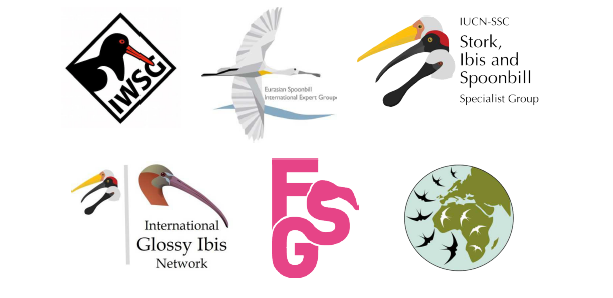
International (wetland) conservation NGOs
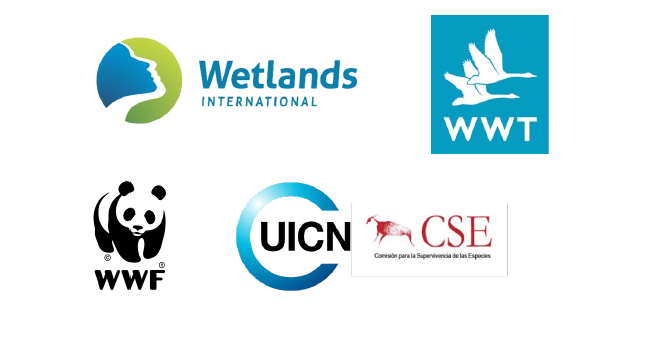
Scientific research groups/institutes/societies
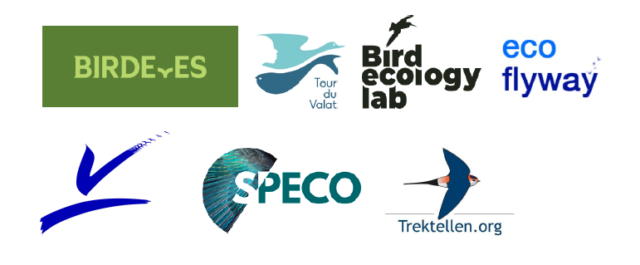
BirdLife partners
